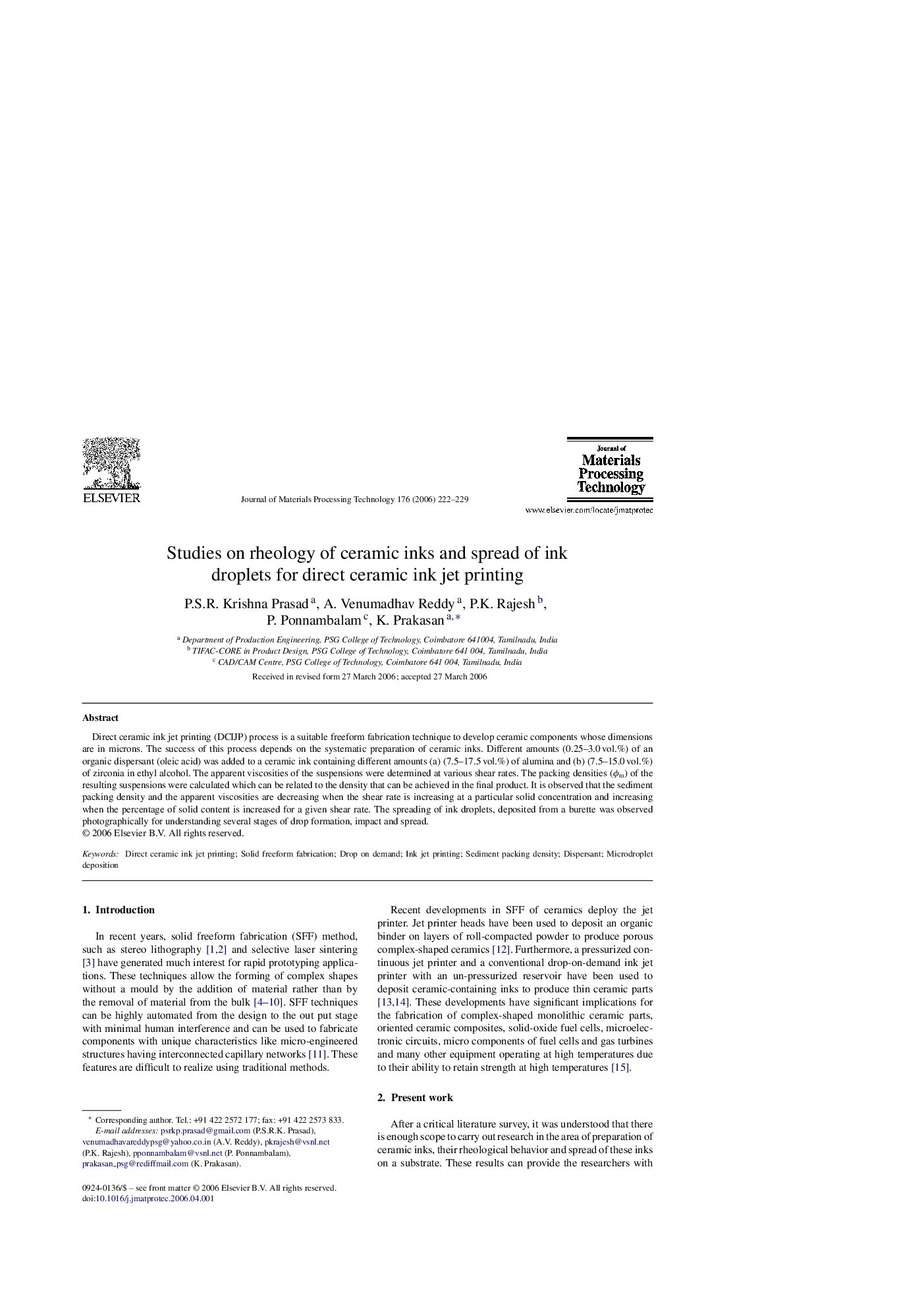| Article ID | Journal | Published Year | Pages | File Type |
|---|---|---|---|---|
| 796536 | Journal of Materials Processing Technology | 2006 | 8 Pages |
Direct ceramic ink jet printing (DCIJP) process is a suitable freeform fabrication technique to develop ceramic components whose dimensions are in microns. The success of this process depends on the systematic preparation of ceramic inks. Different amounts (0.25–3.0 vol.%) of an organic dispersant (oleic acid) was added to a ceramic ink containing different amounts (a) (7.5–17.5 vol.%) of alumina and (b) (7.5–15.0 vol.%) of zirconia in ethyl alcohol. The apparent viscosities of the suspensions were determined at various shear rates. The packing densities (ϕm) of the resulting suspensions were calculated which can be related to the density that can be achieved in the final product. It is observed that the sediment packing density and the apparent viscosities are decreasing when the shear rate is increasing at a particular solid concentration and increasing when the percentage of solid content is increased for a given shear rate. The spreading of ink droplets, deposited from a burette was observed photographically for understanding several stages of drop formation, impact and spread.
